What eats a bear? Well, most of us are probably afraid of bears. But what animals aren’t afraid of bears? so much so that it would date to attack and potentially eat it? Here we’re going to provide some insight into what could hunt, catch and eat a bear. Comparison of bear sizes and more.
But first, here’s the quick answer you can scan through, then we’ll go on to explain more detail – as it does depend on the type, size, and location of the bear and its predators.
What eats a bear? The list of what eats a bear is short, as Apex predators and carnivores. Most other animals have more to fear. But tigers, other bears, wolves, and especially humans have been known to attack and kill bears. Scavengers in numbers are also a threat.
Regardless of what type of bear it is, as an apex predator and carnivore, bears, have almost no natural predators. These are mostly just limited to other bears, humans, scavengers, and the occasional tiger.
Watch this video explaining the details from our Ranger Planet Youtube Channel. Or continue reading.
What eats a bear
A fully-grown bear doesn’t have much to worry about in terms of predators. Thanks to its magnificent size, brute strength, and surprising agility and speed, animals, in general, know better than to attack an adult bear.
And if that wasn’t enough, bears are also known to further make themselves look larger and more intimidating by fluffing up their fur.
A charging bear is probably not a very inviting sight. And few animals or humans have survived to tell the tale after this happens. The main disadvantage that bears have though is that they are solitary creatures.
This makes them vulnerable to attacks from some predators.
Female bears and cubs are a different story. Cubs are obviously weaker and smaller, and females often have their cubs to worry about most of all – in defending cubs, females are often led by distraction, particularly from attack by numerous pack animals, and ultimately are at a disadvantage in a skirmish against any predator.
It’s worth mentioning though that a mother bear is also probably at its most ferocious when its cub is threatened.
Different types of bears
There are predominantly three “types” of bears in the world. But there are eight varieties in total.
The three dominant types are the white polar bears, the brown grizzly bears, and North American black bears. When it comes to strength and size, the polar bear ranks the highest and the black bear the lowest – of the three. Another commonly known type of bear is, of course, the panda bear.
How vulnerable they are to particular predators will depend on their size, their strength, and how aggressive they tend to be as a species.
Also, location means coming in contact with different predators that share the same ecosystem. So for some of the processes in determining what eats a bear, you have to use some common sense and geographical knowledge.
Images of the eight types of bear
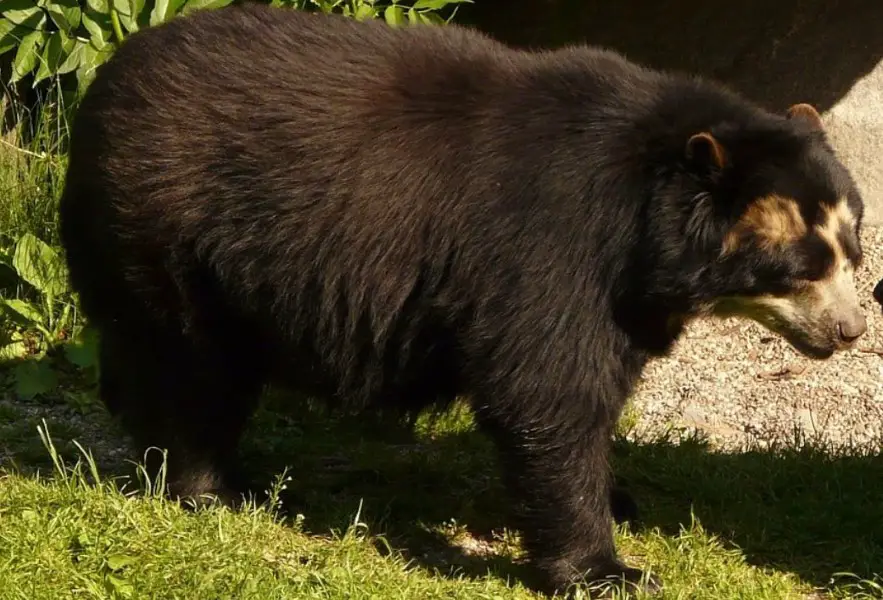
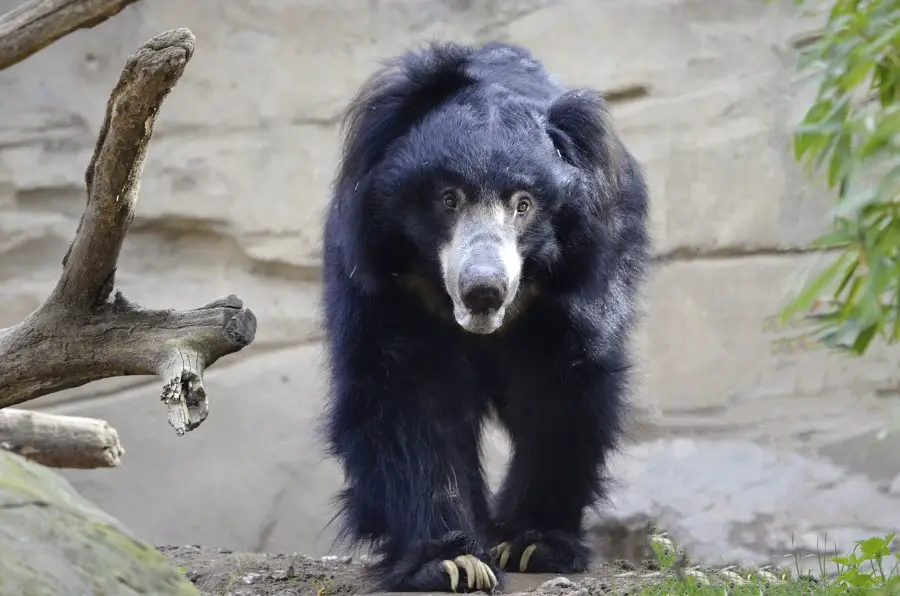
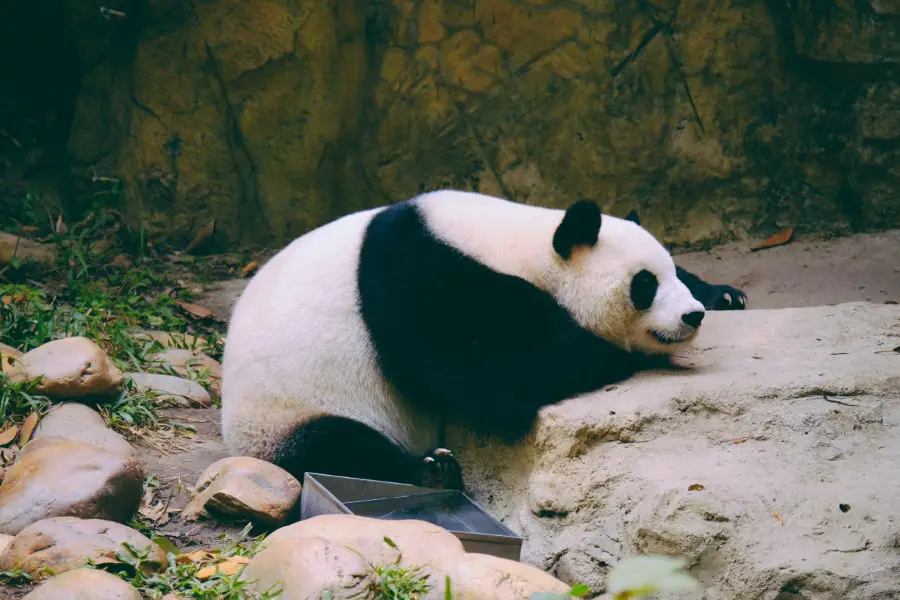
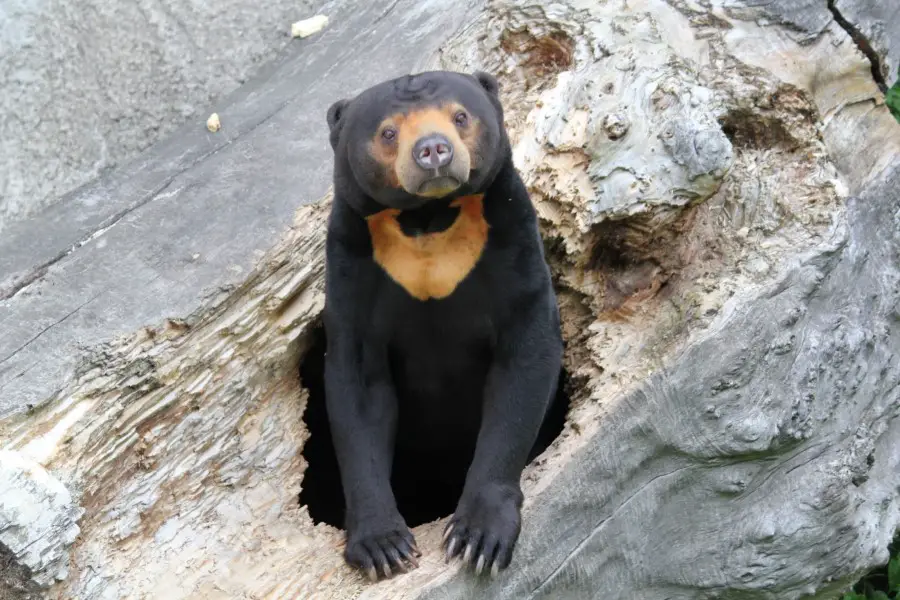
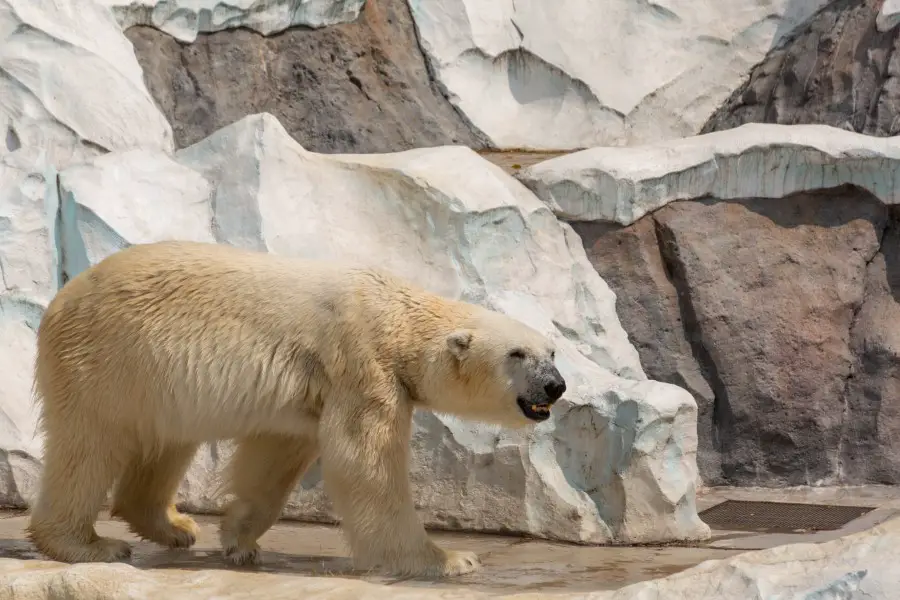
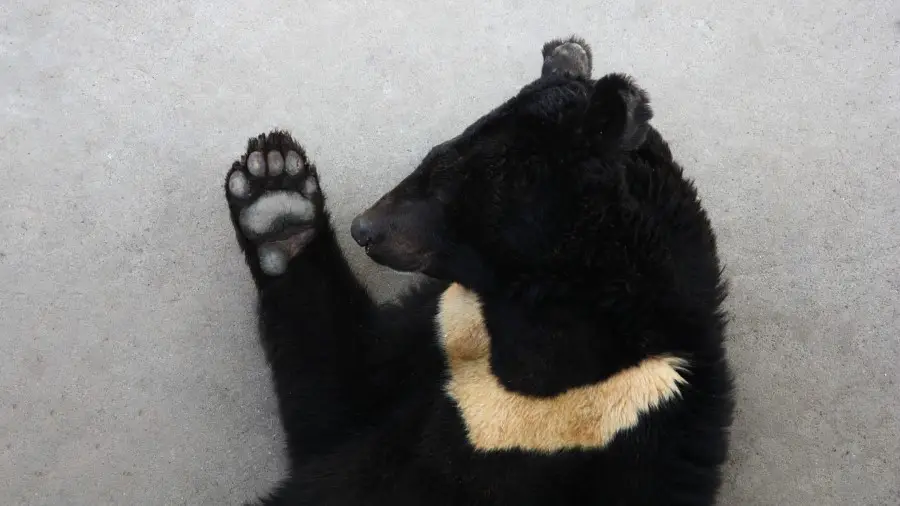
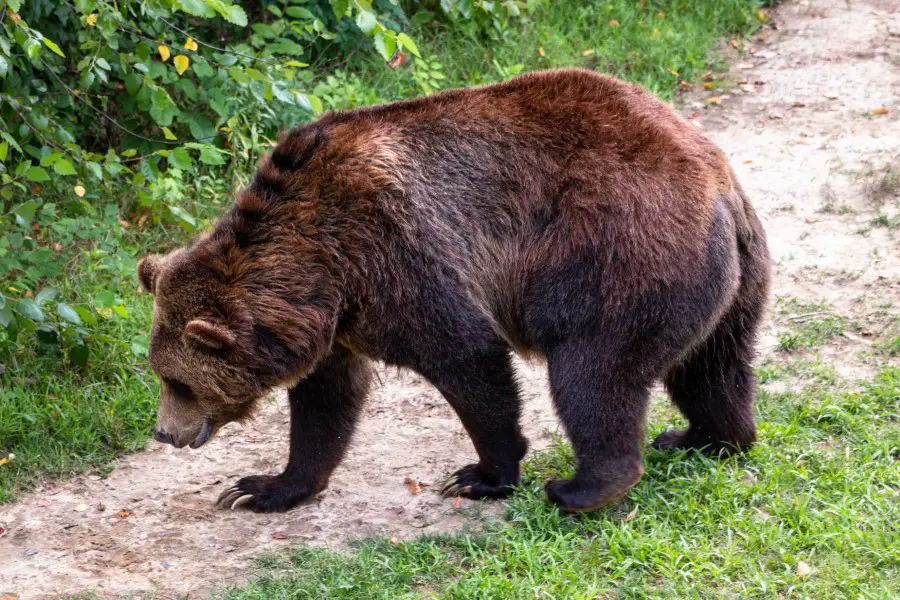
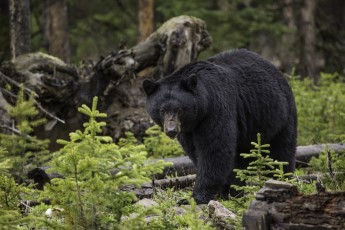
Find out if Spectacles bears are dangerous!
Also, check out What do black bears eat
Bear size, type, and location factors
Here’s a table that outlines the size and weight of each type of bear, so you can see that these variations mean that some are more vulnerable to smaller types of prey than others.
Comparison table of bear sizes and weights
| Bear Type | Size (standing) | Weight (average) |
| Brown Bear | 7-8 feet (215 – 240 cm) | 1300lb (590kg) |
| Polar Bear | 10+ feet (300+ cm) | 882lb (400kg) |
| North American Black Bear | 5-7 feet (152-215 cm) | 600lb (272kg) |
| Andean Bear | 6 feet (180cm) | 340lb (155kg) |
| Asian Black Bear | 6 feet (180cm) | 308lb (140kg) |
| Sloth Bear | 6 feet (180cm) | 308lb (140kg) |
| Panda Bear | 5 feet (150cm) | 220lb (100kg) |
| Sun Bear | 5 feet (150cm) | 110lb (50kg) |
For size and weight, keep in mind these are estimates and focussed on the males to simplify it, females can be slightly larger or slightly smaller.
Bears vs tigers – tigers eat bears
Tigers are just about the only natural predator of bears, apart from other bears and humans. But given the right circumstances, we would also put Wolverines and mountain lions in this bracket too.
Although a tiger has the element of surprise and superior ambushing skills on its side that allows it to overpower just about any animal, they rarely attack bears.
This is because the two species are very evenly matched in terms of skill, strength, and firepower, so it is just not worth the risk of injury for either to take on the other.
However, in Asia, where the size of tigers is usually larger than in the rest of the world, a large tiger will sometimes attack and eat small to medium-sized bears.
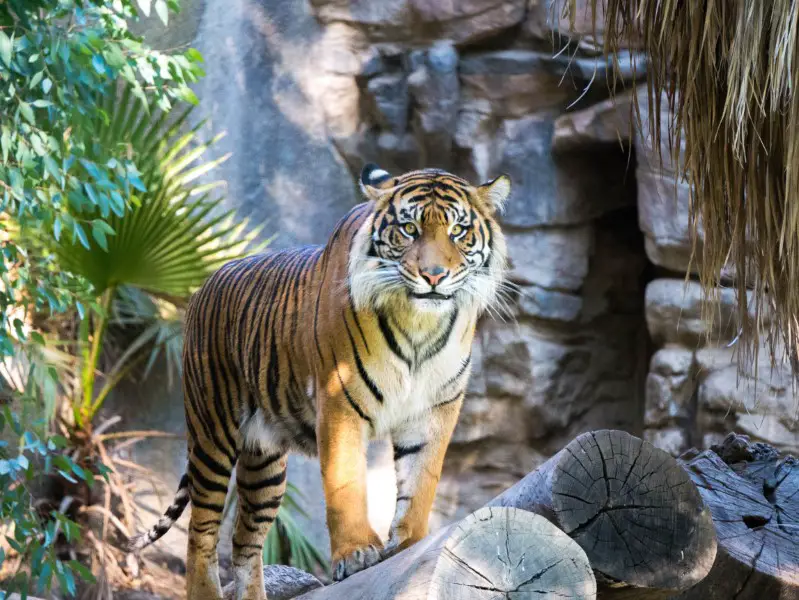
Bears vs wolves – wolves eat bears
It’s long been a debate as to whether wolves prey on bears. Certainly, there have been reports from trappers and guides that bear fur has been found in wolf droppings.
Bears that have made a run when wolves are in the area and there’s circumstantial evidence that wolves have attacked bears in their dens.
In the wild, numbers count. If a pack of wolves can harass a young, or even a grown bear long enough to tire it out then it is possible they could kill it for food.
Although, wolves would have to be quite hungry by this point. So it’s more likely to occur in the winter months when food is scarce.
Find out what wolves eat here!
Also, find out what eats a wolf!
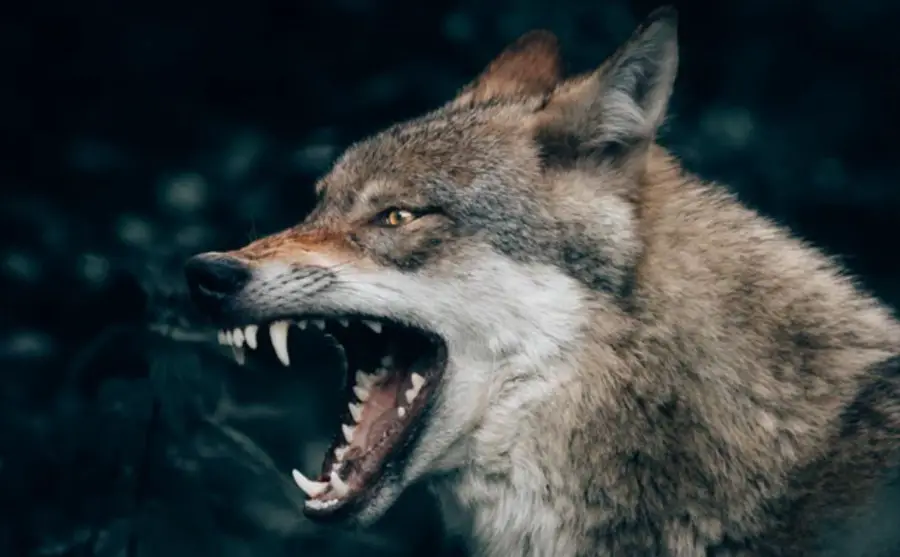
Bears vs other bears – bears eat bears
Male, adult bears are commonly known to eat bear cubs that aren’t their own. In fact, in dire circumstances when food is scarce, they might even eat their own cubs.
Aside from this, bear species such as the polar bear, which have a distinct advantage in terms of strength and size over black and brown bears, will often hunt and eat the weaker species where their territories cross.
In turn, a grizzly is larger and stronger than black bears, so they will clash with them too – but rarely. Refer to the size chart to get an idea of how each might weigh up to another.
But keep in mind territories. For example, the Andean bear has little chance of being attacked by other bears due to its proximity to the Andean mountains.
Bears vs humans – humans eat bears
Like just about every other animal in the animal kingdom, bears too are hunted and eaten by humans. In fact, humans are probably the most prominent predator of bears and have severely reduced the populations of just about every species of bears in the world.
Of course, humans require the use and help of various equipment such as weapons and machinery to counter the natural advantages a bear has – the strength and power that bears have over them.
These hunted bears are then utilized as food and also for their fur and certain organs. A bear’s gall bladder is often used in traditional medicine.
What eats a bear – a bear’s other predators
Any animal that has the advantage of size and/or strength over a bear, would be likely to kill and eat it.
Examples include rhinos and hippopotamus, and waterborne animals like crocodiles.
All of these have the strength and skill to overpower a grizzly or American black bear with relative ease – IF they were to share the same territory.
Polar bears, which are much greater in size and strength when compared to black bears and grizzlies are not that easy a target for these animals.
However, since most bears live in a rather different natural environment from these other animals, especially polar bears, the chances of a skirmish between the two range from rare to never.
Bears vs scavengers
A bear has the advantage of speed, strength, and size over just about every scavenger, but since scavengers mainly only go after a dead animal, there isn’t much a dead bear can do to defend itself against scavengers, unless they arrive in larger numbers.
Once a bear dies, be it from natural causes or after an attack from any of its other predators, the carcass will be targeted by scavengers, and possibly even other animals if they’re unable to find any other fresh meat.
Bears vs ungulates
Ungulates like moose, bison, and musk ox have been known to attack back with horns and hooves to stave off bear attacks. Bears act with caution to try and isolate and attack the smaller bison, moose, or oxen.
What eats a bear – educational resources
Take your education of bears in the wild even further at home or in school with the following resources that we’ve sourced as the best available on Amazon.
Bears Fun facts about our amazing bears
One of Us: A Biologist’s Walk Among Bears
So finally…
We hope this has been useful in understanding bears, what could eat a bear, and what predates bears. Let us know any thoughts in the comments below.
This content has been checked and verified by a qualified veterinary practitioner. The article has been reviewed by our editorial board and has been approved for publication in accordance with our editorial policy.
